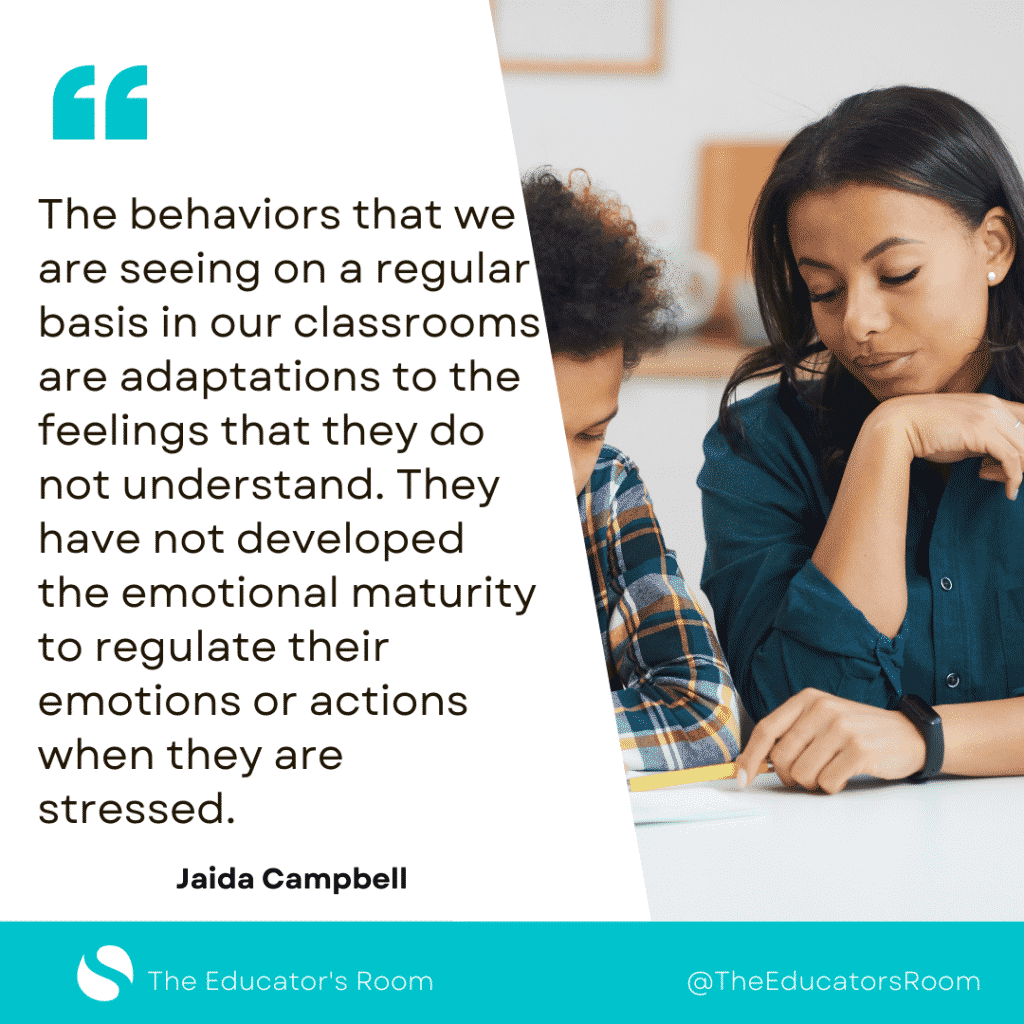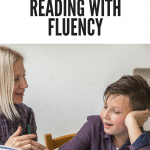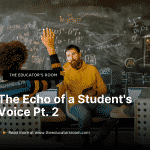Are you frustrated and worn out at the end of the day? Do you feel like you give everything you have and the children just don’t appreciate it? Does the next break from school look too far away for comfort? My mother taught for a total of fifty years, and, in those years, she speaks of the difference in the children that are in our care and the behaviors we see now compared to her earlier years.
“Fifty-one percent of children in public schools live in low-income households, and when poverty levels exceed 50 percent, there’s a significant drop in academic performance across all grade levels. At the same time, 25 percent of all adolescents—including 30 percent of adolescent girls—are experiencing anxiety disorders.” (www.promisesbehaviorialhealth.com)
As I mentioned in my previous article, there is science that proves that under constant stress and trauma in a child’s life, the brain can be profoundly affected during development. The amygdala, the alarm system of our brain, is triggered so many times that it is overdeveloped whereas the prefrontal cortex that houses attention span, logical reasoning, and problem-solving is underdeveloped. The “ready to learn” part of the brain that the teacher is looking for is having a difficult time keeping facts and procedures straight and holding onto short-term memory so that it can become long-term memory, But, don’t fret! There is hope! This brain can be re-wired and developed into a “learning brain” as some call it. It takes time but you may be that teacher that begins the difference in a child’s life.
Trauma Informed Care
Trauma-Informed Care is a mindset, a shared understanding, a common language that enables us as educators to empathize with students to help equip them with the skills necessary to be life-long learners. With the science that explains how toxic stress can affect the “learning brain” and what we know from the ACEs Study that ties toxic stress of poverty, trauma, and abuse, Trauma-Informed Care brings understanding and strategies that help agencies, schools, non-profits become Trauma Sensitive. It teaches us to be responsive to the adaptations of trauma instead of reactive.
You, as their teacher, can help rebuild their brain by applying simple strategies. There are many strategies that can be introduced into your daily routine. They do not take much time and energy to establish, and instead of thinking that you need these strategies for just those particular children, all children will benefit from the implementation of these small gestures. And in doing so, you will be well on your way to becoming a Trauma-Sensitive Classroom.
Care and Patience
The first strategy in making a difference in these children’s learning development is to be caring and patient especially when we see children reacting in a way we do not understand. “Children’s reactions to trauma can interfere considerably with learning and behavior at school. Schools serve as a critical system of support for children who have experienced trauma.” (National Child Traumatic Stress Network)
The behaviors that we are seeing on a regular basis in our classrooms are adaptations to the feelings that they do not understand. They have not developed the emotional maturity to regulate their emotions or actions when they are stressed. And believe me when I say that walking into your classroom for many is stressful enough.
One analogy of their stress level is been explained like a class of water that is almost full. The stress is already at the rim of the glass when they walk into the building that morning. No telling what was going on in their home the night before and then this morning. Their anxiety may be up because he did not finish his homework or he knows he is not ready for a test. That glass is probably going to overflow any minute. He is not going to walk up to you and tell you he is not prepared. He is going to try to save face by pretending he doesn’t care. You would be surprised how many children portray a nonchalant attitude toward academics that really care. They don’t want to look like they have tried and then failed. They would rather look like they didn’t try so that if they fail, they can give the appearance of not caring.
The most important thing that a teacher can do for the children in their classroom is to be a caring adult in their lives. You don’t have to know what has happened to that child to be empathetic. You only need to spend a few moments every once in a while with each child for them to know that you care. Be sure to say their names in a positive way each day even if it is only when you take roll at the beginning of class. Ask them how they are doing, what they did over the weekend, how is his/her brother (if you know of someone sick in their home.) You don’t know how far that goes with children to know that you care about them and their families. Having a Trauma-Sensitive Classroom for these children is like a breath of fresh air and they look forward to being in your class.
Organizational Skills
Another strategy to help your students rewire and develop a learning brain is to assist them in organizing their materials, keeping a planner, and taking time at the end of the class period to give them time to put their things away properly and in the right places. So many times, in middle school and high school, we stop teaching them how to be organized and how to keep up with their materials. We assume they can do this. This is a skill that is learned, and most likely, it is not being taught at home. It would be beneficial for all of your students (not just the ones you think need the help) for you to take time at the end of each class period to help them be organized.
When I taught middle school math in a small rural school, the last 7-8 minutes of class, we stopped and got out our planners. I would watch them as they wrote their assignments down, and I would walk around and stamped a cute stamper in the spot where they wrote the assignment down. It is funny that the 8th graders wanted the stamps as much as the 5th graders. I had different stamps and sometimes they requested certain ones. Not only does this help the student to develop a system of staying organized, but it will increase getting the assignments completed by them. You will spend less time reminding them of what they have not turned in and more time interacting with your students in another way to show that you care about them.
When I do home visits, we talk with the parents about how to help his/her child get ready for the morning the night before. Make a place for the backpack to sit all the time for consistently and to be sure that all their assignments, folders, homework, signed papers are there the night before. As a teacher, you could have talks with the whole class about these strategies as well. A Trauma-Sensitive Classroom puts things in place that help all students to maneuver through the day as stress-free as possible to create a safe learning place.
Notice Them
And the last strategy that I will mention is to find something that you can compliment every one of your students about. As middle school teachers, and maybe high school teachers as well, we tend to think this is not as necessary as it is in elementary school. But these middle schoolers are just now coming into the age of awareness; awareness of comparisons, awareness of their looks, their clothes, their bodies, awareness of the have’s and have-not’s, awareness of their hormones. The list is endless. Maybe John is not getting all of his assignments in every day, but he loves to skateboard. Ask him about it, and ask him every Monday how skateboarding went over the weekend, and tell him, “I bet you are awesome at skateboarding.” You may see more assignments turned in. It might not be a 180-degree turnaround, but you will see a change.
What about Shelby? So quiet and calm but not producing work that you know she can do. Ask her what she likes to do and try to tie it in. Ask to see her “work” or a picture of whatever it is you see her drawing. She will try to be more focused on you because you care about what she likes. Tell Cameron that you think his shirt is cool or that Candace has nice shoes. You must be intentional but sincere. They want to connect with you so you need to open that door so that they see your care. You may think this is not necessary but I work with students who have no one that compliments them or has a positive thing to say and making an effort to find something about each student will make a world of difference in your interaction with them.
I have had students say to me, “She only cares about covering her standards, not about me. If she cared about me, I’d care about her work.” This is straight from their mouths. I know that teachers care about their students or they would not be pushing them so hard. Teachers would not be teaching if they did not care about children. We teachers just have to realize that we may not be communicating that care in a manner that they can relate to. Unfortunately, your hard work and your high expectations do not necessarily translate “care” to them; it looks like rules and demands. Spending time with them is what speaks volumes to them.
And you can do that by going down the line of students waiting to go into the cafeteria and ask them questions or commenting to them about the upcoming dance. While recess is going on, don’t spend the whole time with the other teachers; seek out those students that you have not been able to connect with yet. Walk up to a group of students and engage them in conversation. Engaging in conversations and noticing things about them help them to feel connected not only with you but with the school community.
Be that Trauma-Sensitive Classroom.
Yes, I know teachers are overwhelmed with all the responsibilities that are piled on them. And yes, I know that they are expected to teach all the standards along with all the other things they have to do in a day’s time. But you must understand that if the student does not have the “learning brain” kicked into gear or the students have not connected with you, all the teaching in the world will not make the learning happen. “No significant learning occurs without a significant relationship.” (Dr. James Comer)

For more information on Trauma-Informed Care or Trauma-Sensitive Schools, check out these for starters:
https://www.edweek.org/teaching-learning/some-faqs-for-educators-on-childrens-trauma/2019/08






